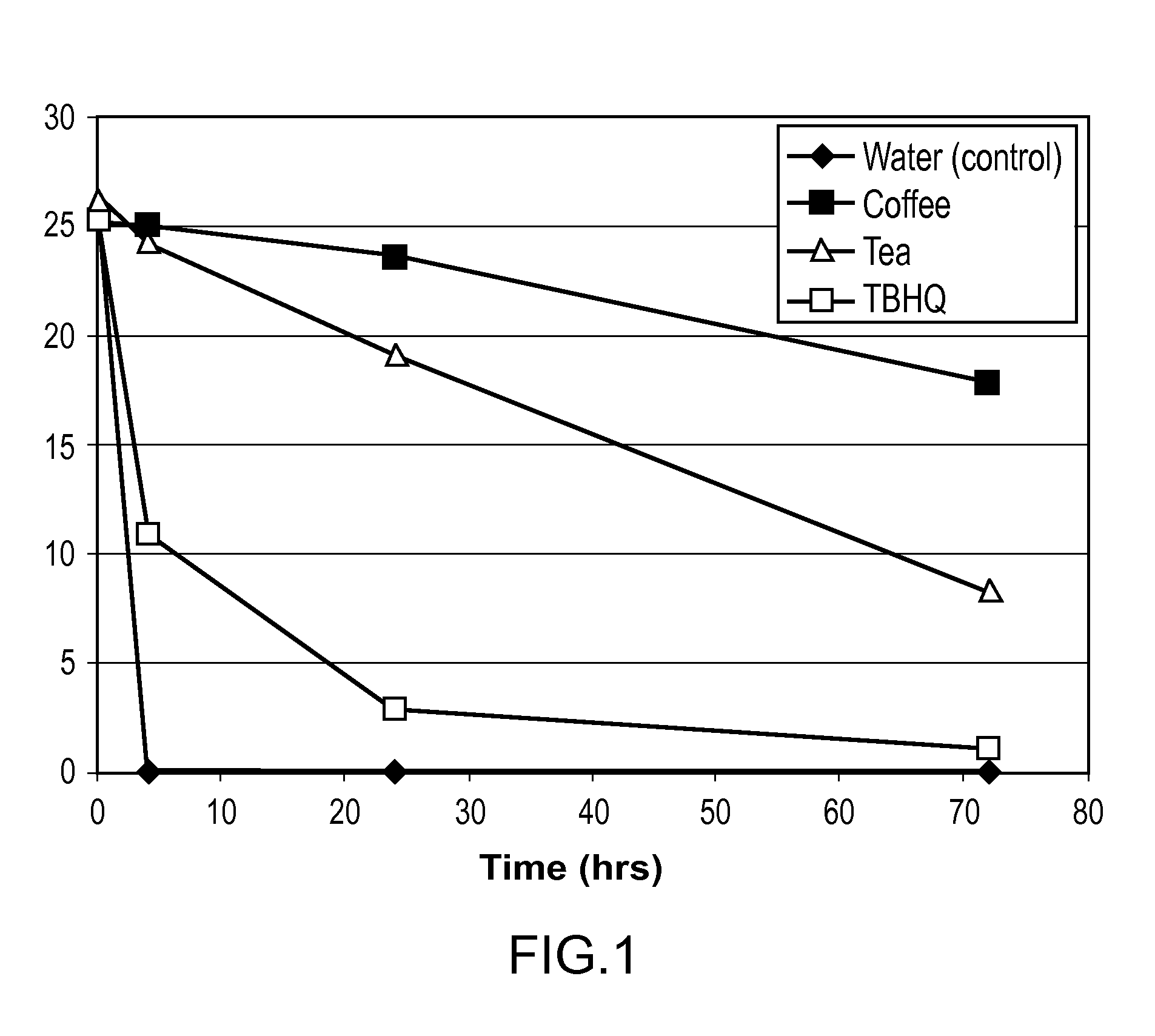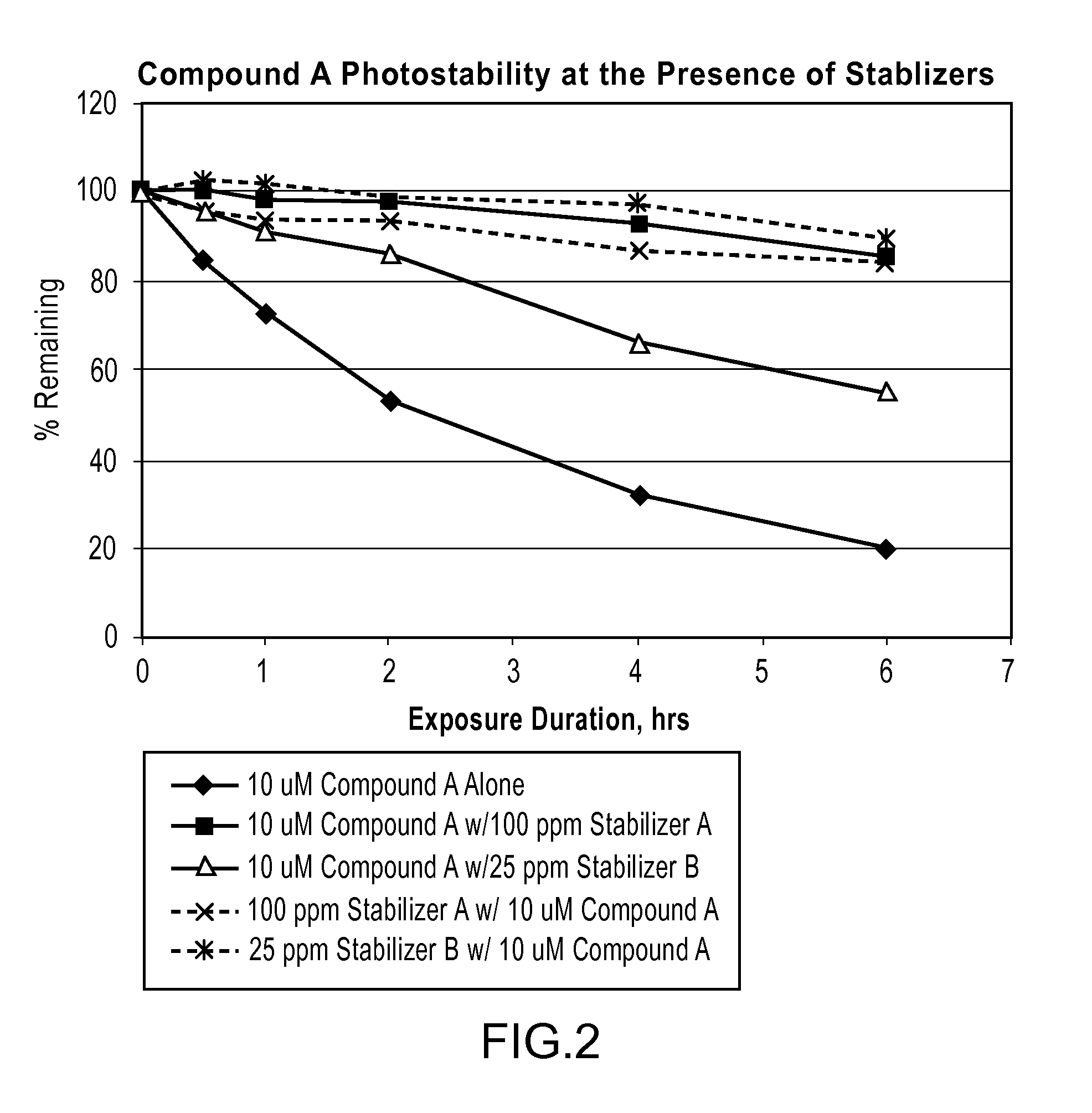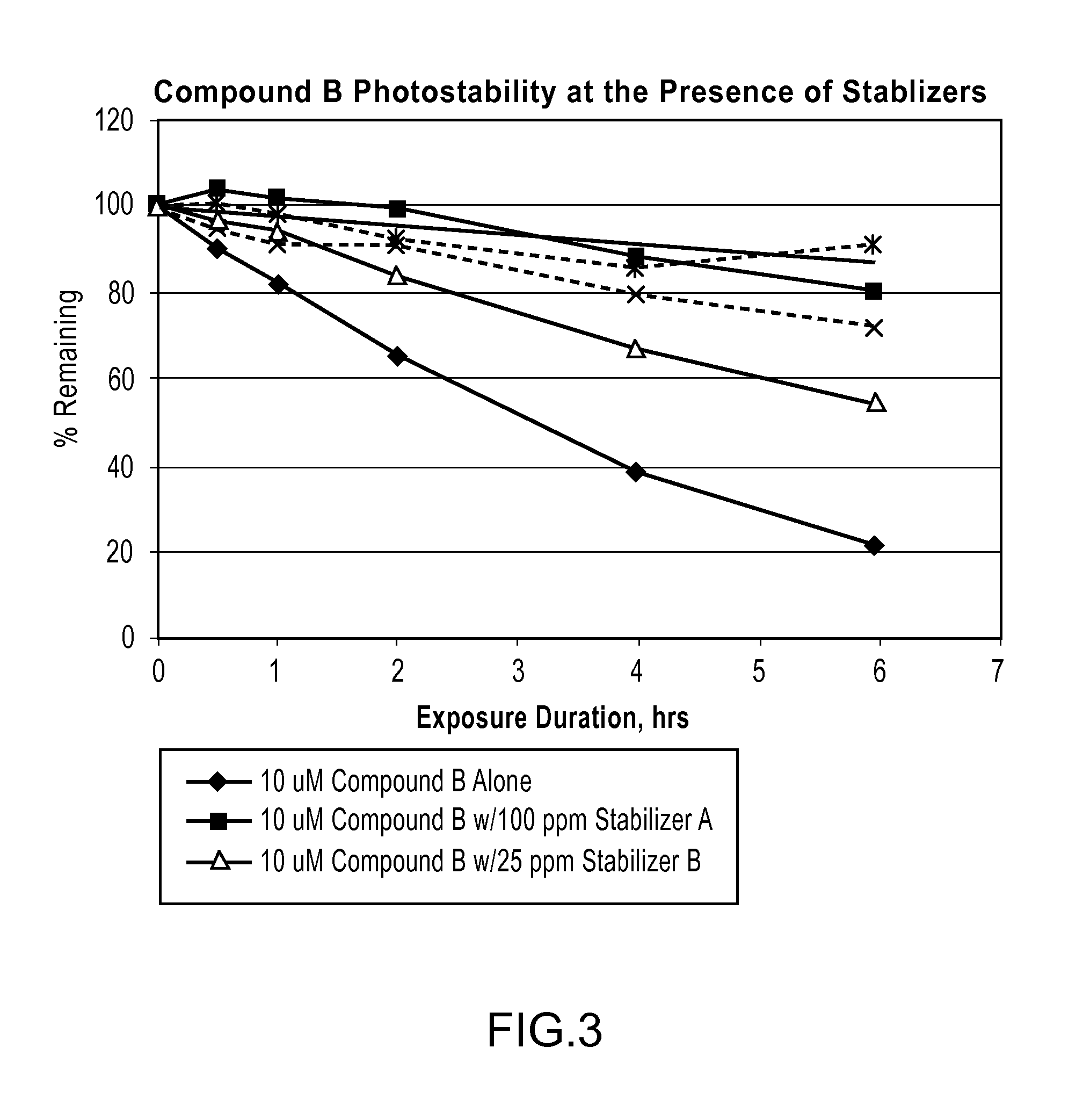Method of improving stability of sweet enhancer and composition containing stabilized sweet enhancer
a stabilized, sweet enhancer technology, applied in the direction of food preparation, additive use, biocide, etc., can solve the problems of delayed onset and lingering of sweeteners such as sucralose and aspartame, and achieve the effect of improving the stability of sweet enhancers and reducing degradation of sweet enhancers
- Summary
- Abstract
- Description
- Claims
- Application Information
AI Technical Summary
Benefits of technology
Problems solved by technology
Method used
Image
Examples
example 1
4-amino-6-methoxyquinoline-3-carboxylic acid
[0314]
[0315]To a stirred solution of ethyl 4-amino-6-methoxyquinoline-3-carboxylate (Example 1a, 1.23 g, 5.0 mmol) in EtOH (20.0 mL) was added aqueous NaOH (2.0 N, 5.0 mL) at room temperature. The reaction mixture was then refluxed for 3 hr. The solution was then filtered and washed with water. The filtrate was cooled to 0° C. and neutralized carefully with 1 N HCl to pH 7. Most of the EtOH was removed under reduced pressure, and the precipitate was collected by filtration, washed with cold water, and dried under vacuum to give the title compound as an off-white solid (1.01 g, 93%). 1H NMR (400 MHz, DMSO-d6) δ 3.89 (s, 3H), 7.40 (dd, J=2.8, 9.4 Hz, 1H), 7.73 (d, J=9.4 Hz, 1H), 7.77 (d, J=2.8 Hz, 1H), 8.77 (s, 1H). MS 219 (MH+).
example 1a
ethyl 4-amino-6-methoxyquinoline-3-carboxylate
[0316]A mixture of ethyl 4-chloro-6-methoxyquinoline-3-carboxylate (Example 1b, 796 mg, 3.0 mmol) and ammonia (25% aqueous solution, 10 mL) in isopropanol (40 mL) was stirred at 110° C. in a pressure reactor overnight. Most of the solvent was then removed under reduced pressure, and the reaction mixture was diluted with water. The precipitate was collected by filtration, washed with cold water, and dried under vacuum to give the title compound as an off-white solid (680 mg, 92%). 1H NMR (400 MHz, DMSO-d6) δ 1.33 (t, J=7.0 Hz, 3H), 3.88 (s, 3H), 4.32 (q, J=7.0 Hz, 2H), 7.36 (dd, J=2.8, 8.8 Hz, 1H), 7.72 (d, J=8.8 Hz, 1H), 7.74 (d, J=2.8 Hz, 1H), 8.23 (bs, 2H), 8.77 (s, 1H). MS 247 (MH+).
example 1b
ethyl 4-chloro-6-methoxyquinoline-3-carboxylate
[0317]A solution of ethyl 4-hydroxy-6-methoxyquinoline-3-carboxylate (Example 1c, 1.24 g, 5.0 mmol) in POCl3 was refluxed under nitrogen for 3 hrs. The solution was cooled to room temperature and evaporated under reduced pressure. The residue was carefully quenched with ice, and neutralized with 2.0 N NaOH to pH 7. The precipitate was collected by filtration, washed with cold water, and dried under vacuum to give the title compound as a pale-yellow solid (1.29 g, 97%). 1H NMR (400 MHz, DMSO-d6) δ 1.36 (t, J=7.0 Hz, 3H), 3.96 (s, 3H), 4.41 (q, J=7.0 Hz, 2H), 7.57 (d, J=2.8 Hz, 1H), 7.61 (dd, J=2.8, 8.8 Hz, 1H), 8.05 (d, J=8.8 Hz, 1H), 8.97 (s, 1H). MS 266, 268 (MH+).
PUM
| Property | Measurement | Unit |
|---|---|---|
| Fraction | aaaaa | aaaaa |
| Fraction | aaaaa | aaaaa |
| Fraction | aaaaa | aaaaa |
Abstract
Description
Claims
Application Information
 Login to View More
Login to View More - R&D
- Intellectual Property
- Life Sciences
- Materials
- Tech Scout
- Unparalleled Data Quality
- Higher Quality Content
- 60% Fewer Hallucinations
Browse by: Latest US Patents, China's latest patents, Technical Efficacy Thesaurus, Application Domain, Technology Topic, Popular Technical Reports.
© 2025 PatSnap. All rights reserved.Legal|Privacy policy|Modern Slavery Act Transparency Statement|Sitemap|About US| Contact US: help@patsnap.com



